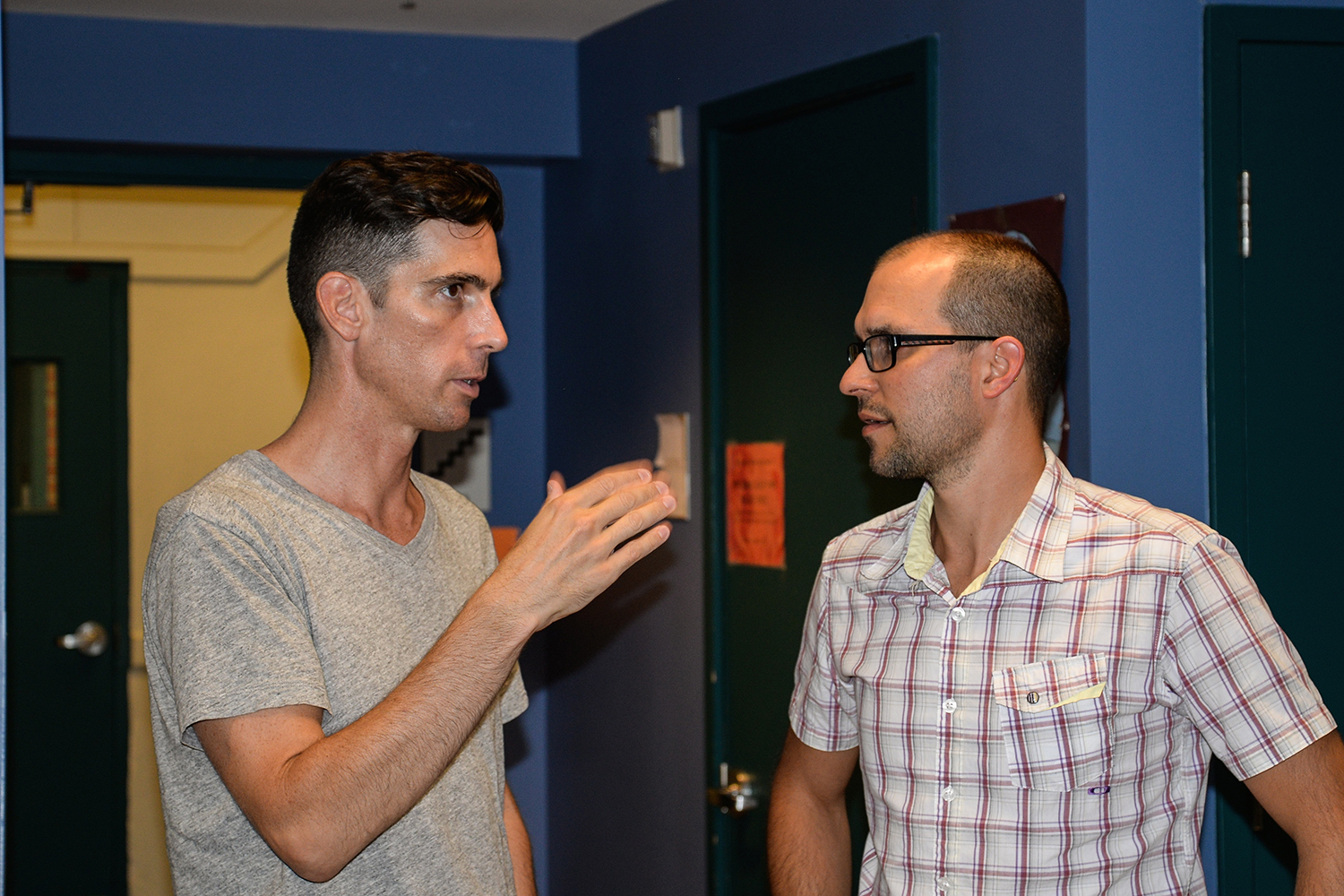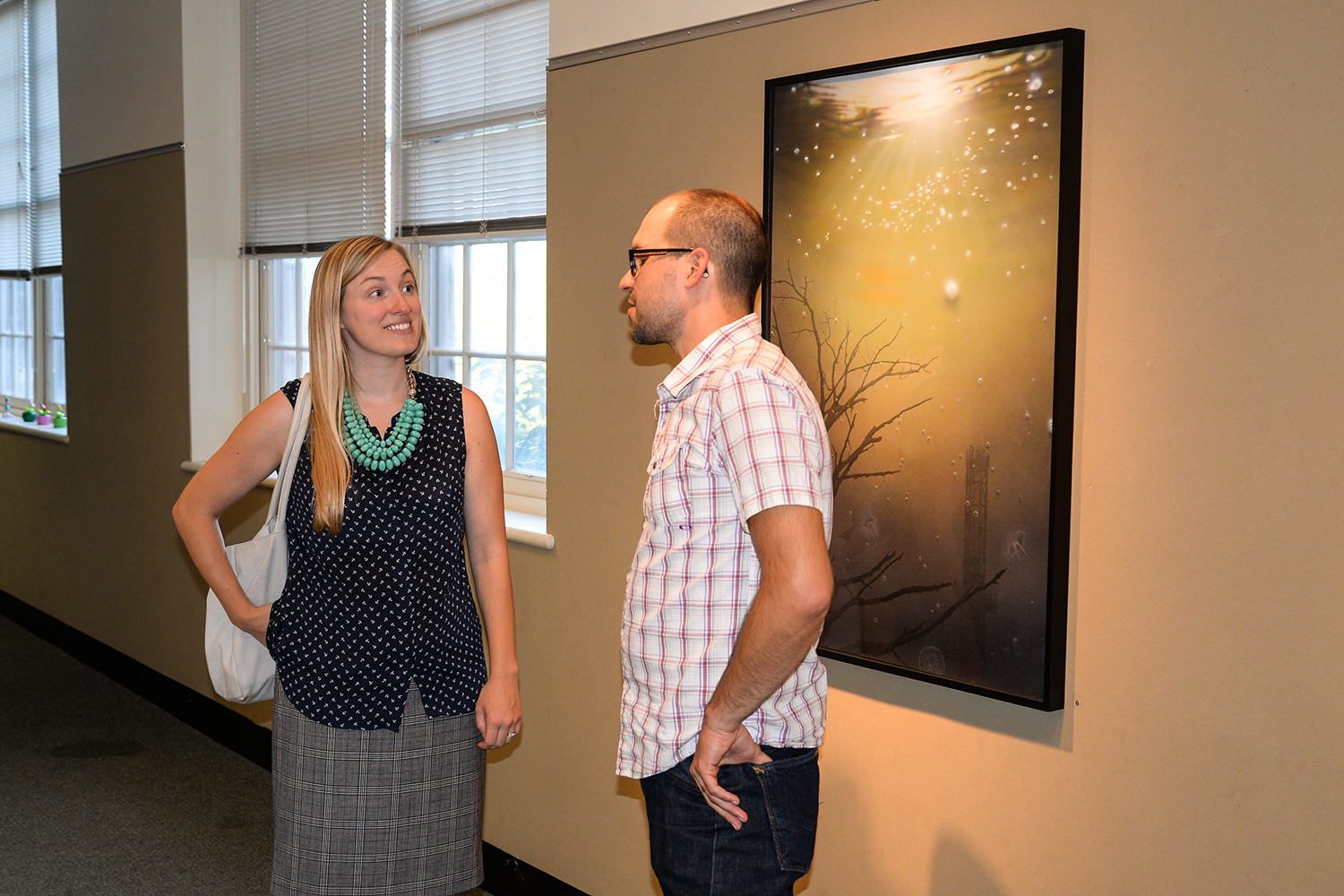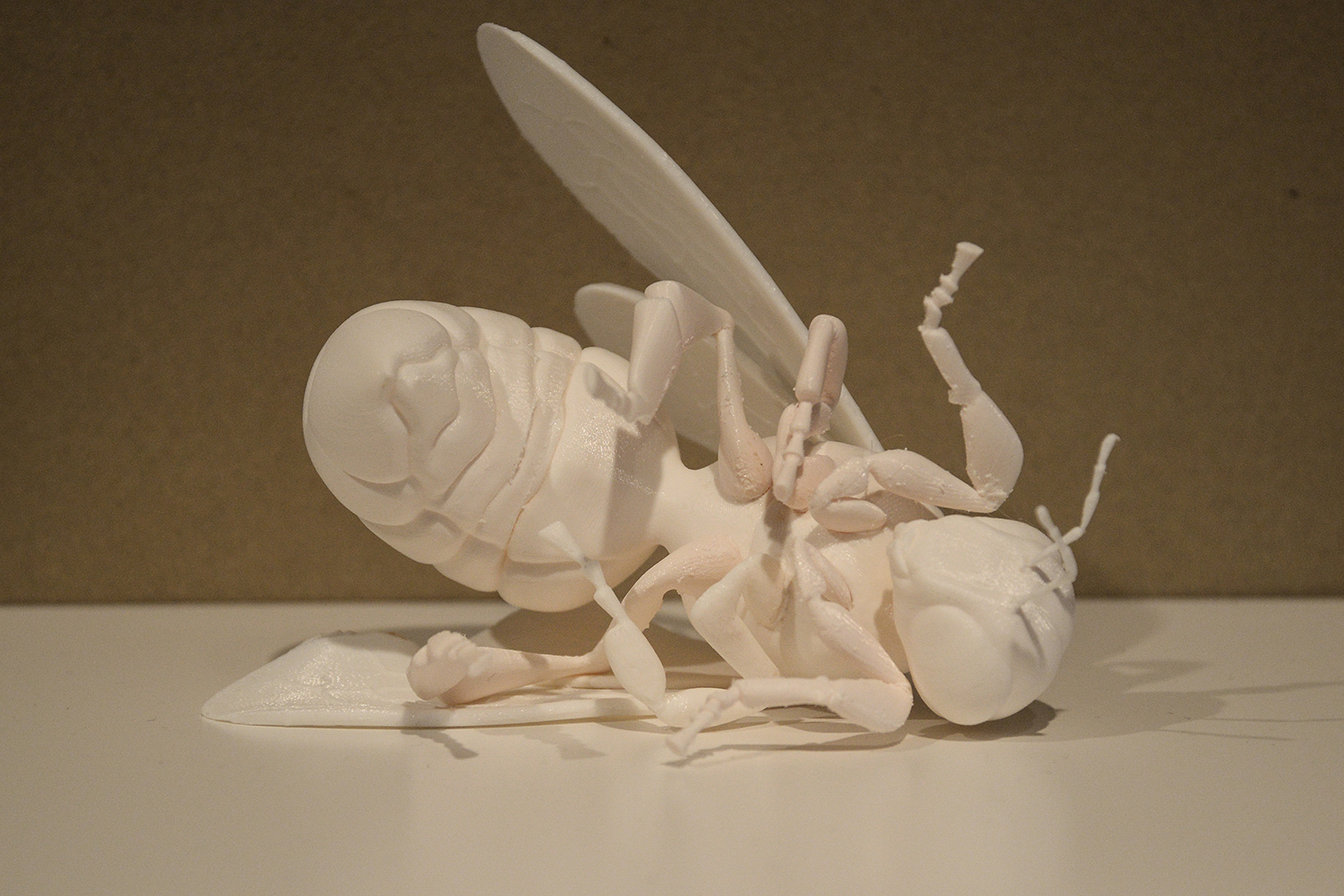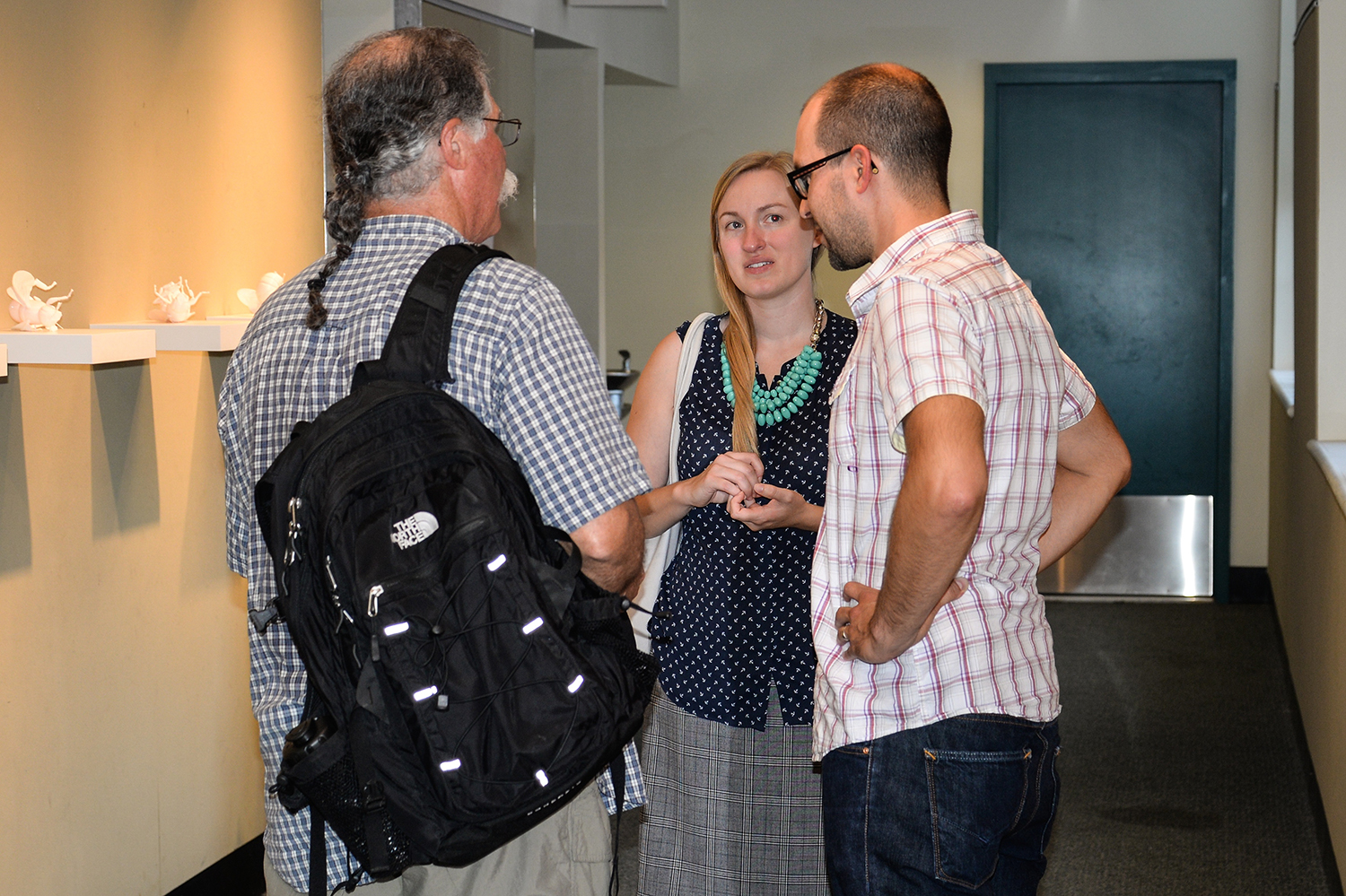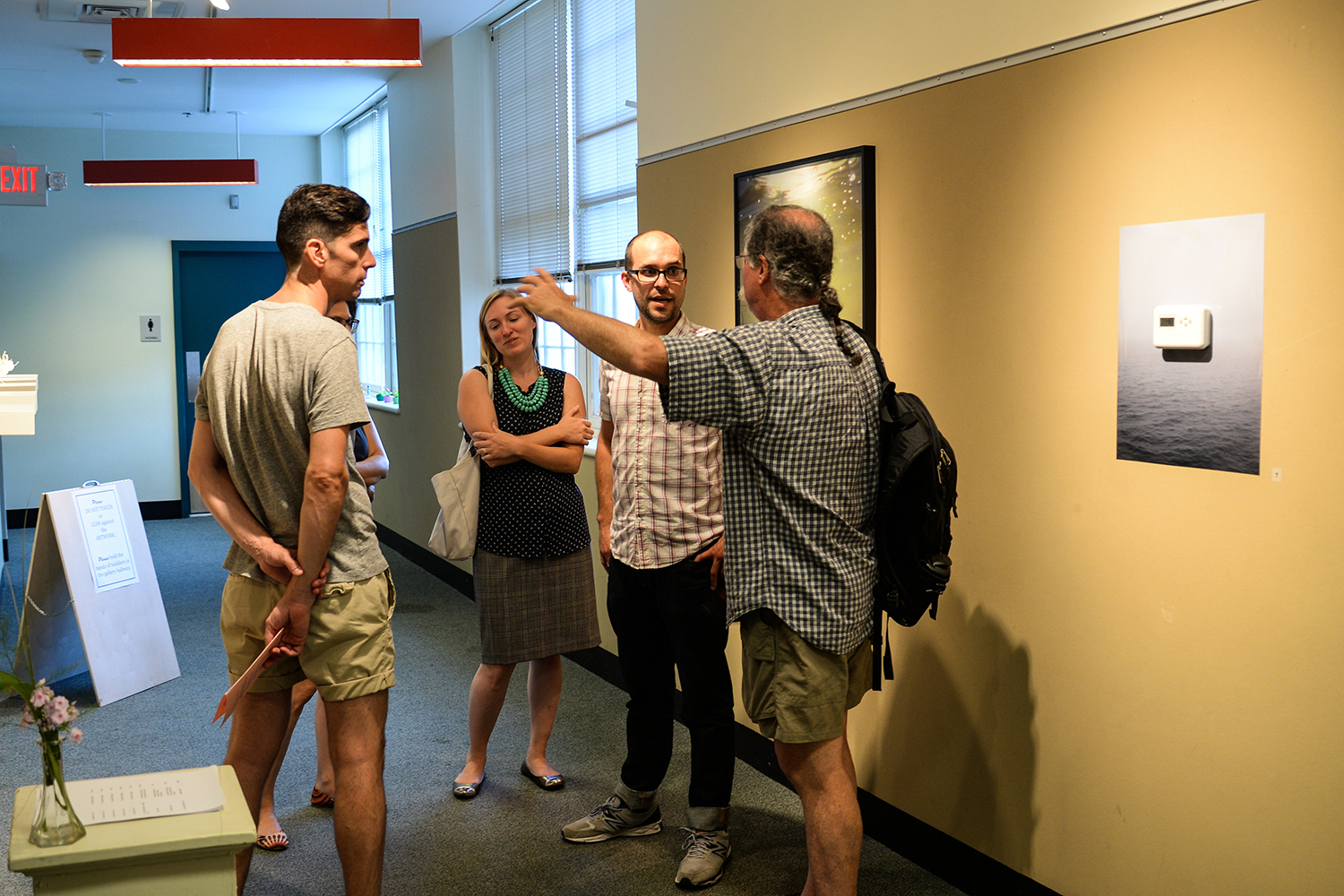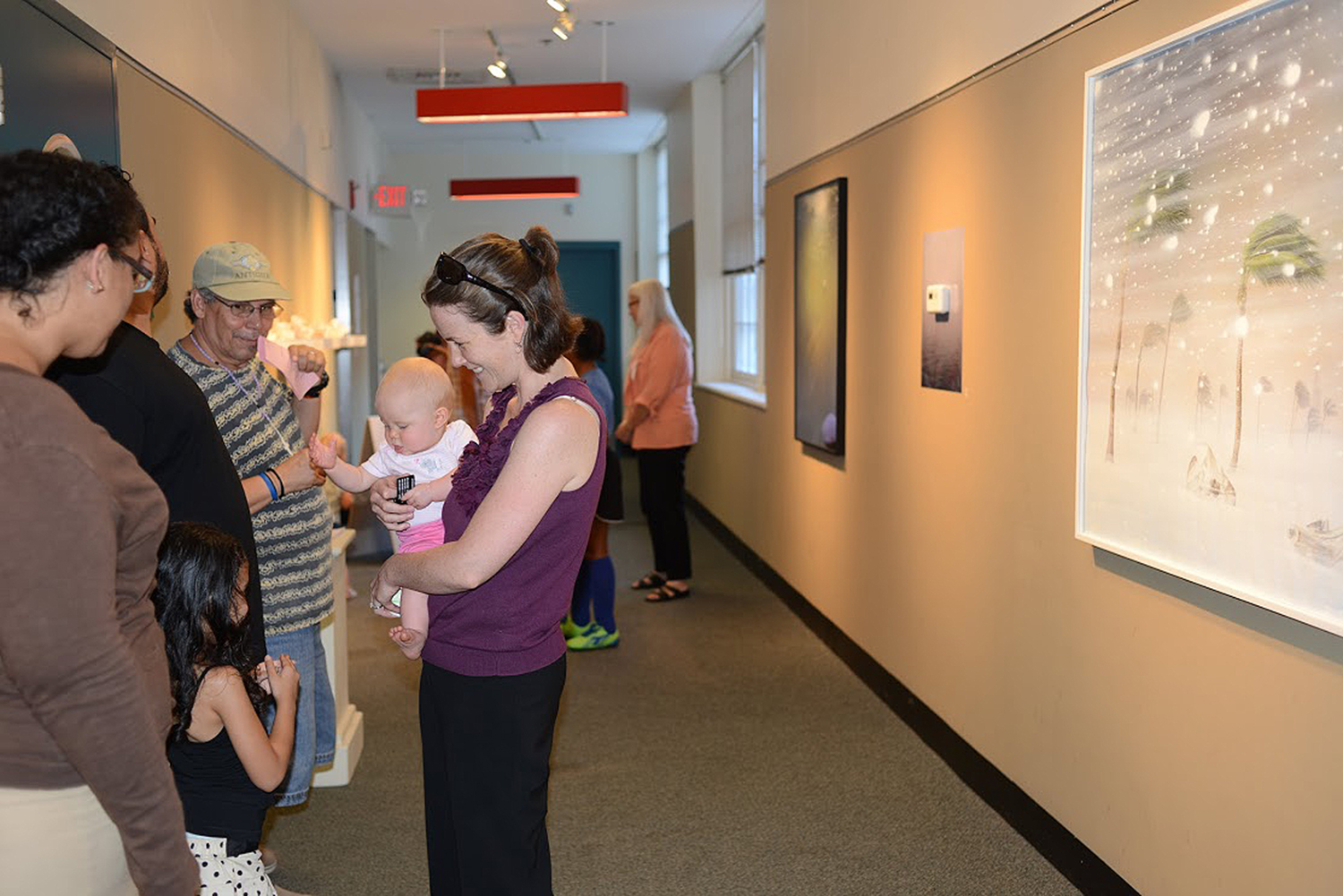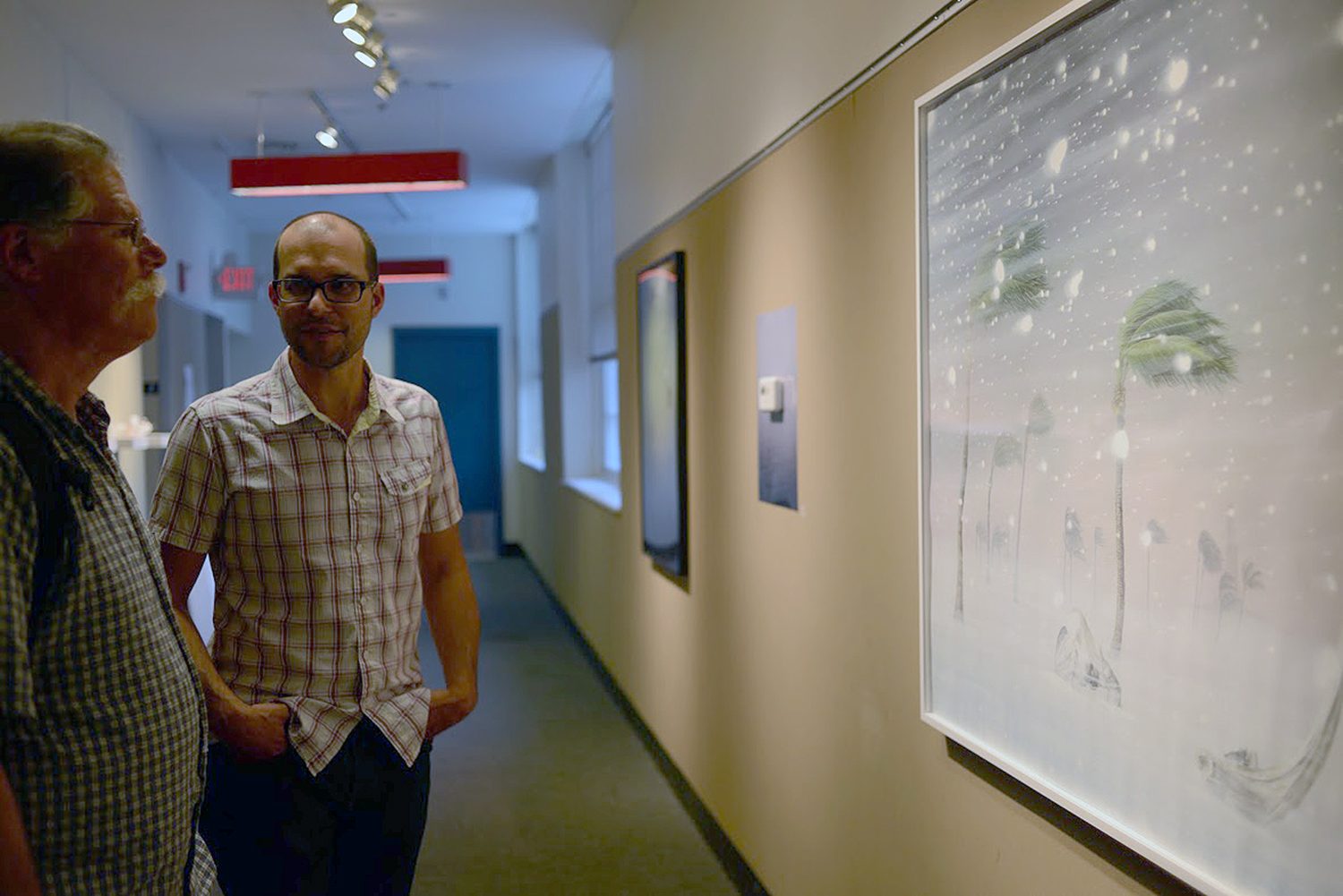COE Scholar Presents Multi-Media Exhibit on “Colony Collapse”
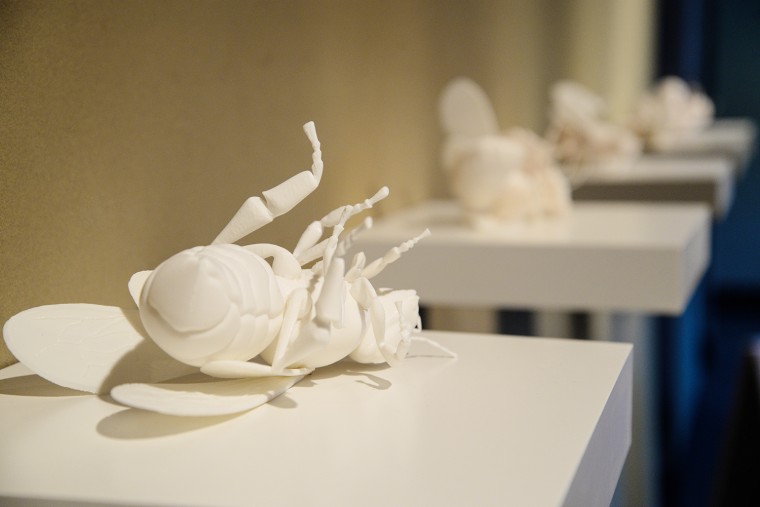
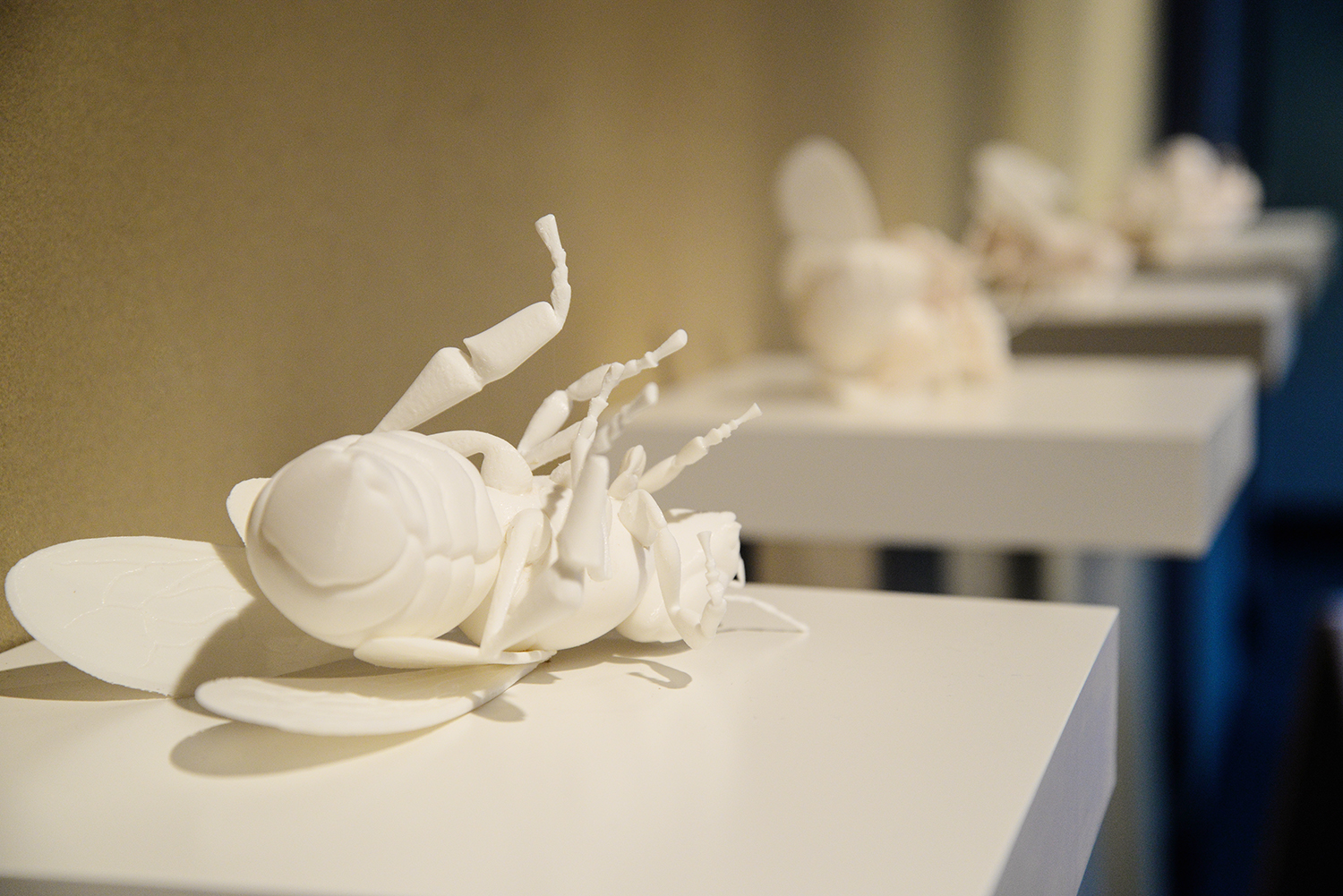
The mysterious disappearance of millions of honeybees – known as colony collapse disorder – has frustrated and worried scientists around the world for more than seven years. The visiting scholar at Wesleyan’s College of the Environment explores this mystery in a new exhibit at the Green Street Arts Center that opened Sept. 4.
Joseph Smolinski, a noted artist who has exhibited in many venues ranging from MASS MoCA in North Adams, Mass. to the Cleveland Institute of Art , uses 3-D printing, video and other media to show the scale of the honeybee crisis – and note that environmental stressors and commercial agricultural practices cannot be ignored as possible causes. His exhibit, “Colony Collapse” is not the first time he has explored environmental themes in his work.
“For the past 10 years, it’s sort of an underlying element that I keep going back to,” he said. I’ll investigate one area and it leads to another.”
Smolinski said his work is influenced by the training he received from his grandfather, an outdoorsman and a landscape painter, and the example of his great-uncle, who was a science-fiction painter and designed movie sets for sci-fi films.
“So I saw you could look at the environment through both these things, representational paintings, and an idealized sci-fi realm of envisioning other planets and worlds.” His interest in how human intervention shapes landscapes and affects living things was inspired, in part, by the first time he saw a cell-tower designed to look like a tree.
“I was struck,” he said. “It was so obviously fake, and then at the same time attempting to be natural. Is this a better solution than seeing technology for what it is? What are the impacts of how humans have used technology?”
The Menakka and Essel Bailey ’66 Distinguished Visiting Scholar at the COE, Smolinski is also a lecturer in art and design at the University of New Haven. The COE’s scholars program promotes a multi-disciplinary approach to the exploration of earth and environmental sciences. Visitors and faculty participate in a COE “think tank” that takes advantage of interdisciplinary work to develop new ways of thinking. That approach excites Smolinski.
“Even within the arts, my work is very multidisciplinary,” he said. “I see it as a laboratory of sorts, always investigating new ways of seeing and new ways of making.” His current work, exploring human intervention through a series of drawings of animals with radio tracking devices, will be displayed in his COE office, which he’s turning into a studio. He also hopes to engage students in a “site-specific” exhibit during the year.
The exhibit is on view through Sept. 25.
Photos of the exhibit’s opening, held during the Middletown Gallery Walk on Sept. 4, are below. Smolinski is wearing the white and red plaid shirt: (Photos by Harry Jiang ’18 and Dat Vu ’15) 